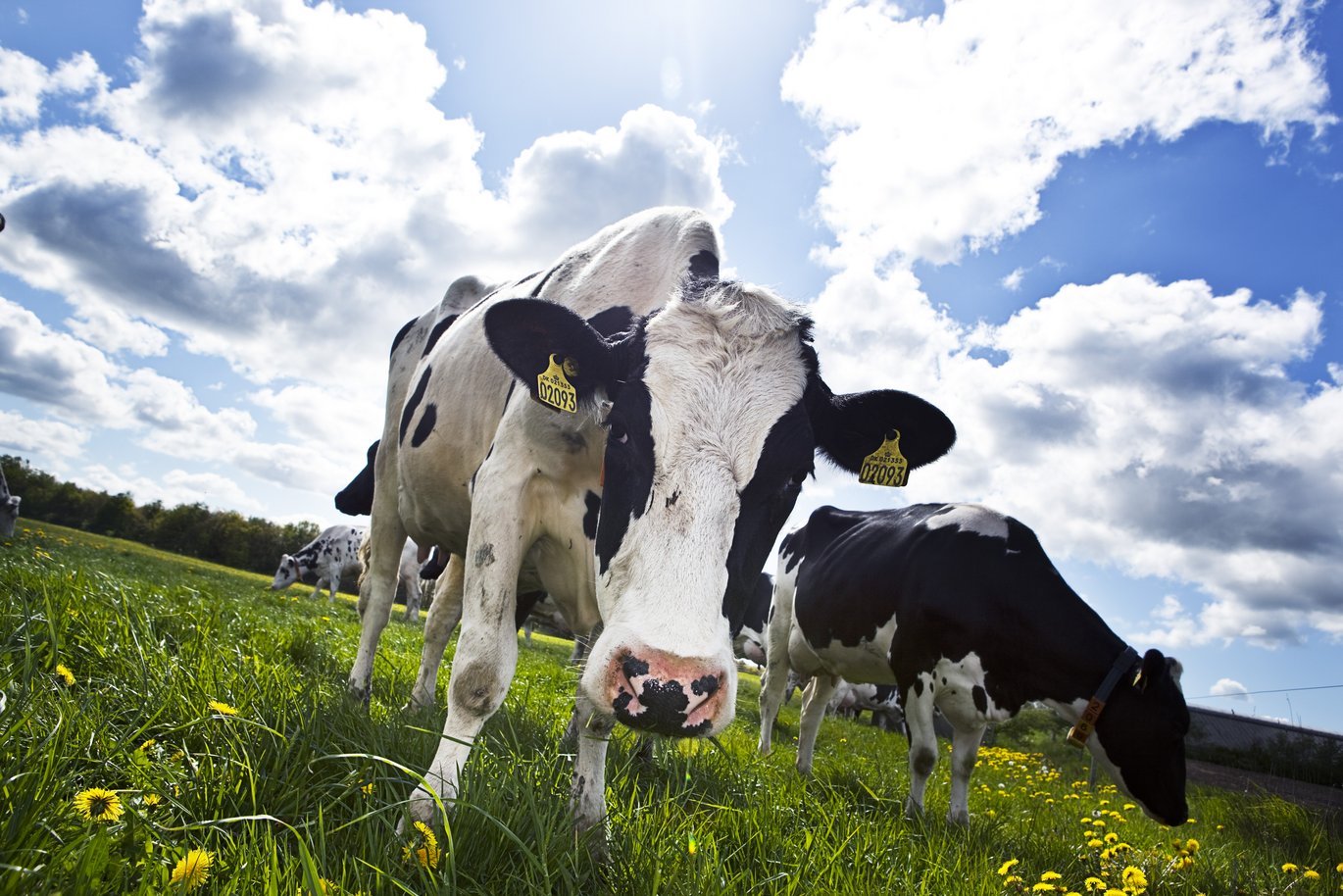Adding nitrate to dairy cow ration reduces methane emissions
In a new project at AU Foulum the target is a 20 per cent reduction in methane emissions in cow burps. This could seriously reduce the agricultural impact on the climate.

Methane emissions from cattle are a well-known problem and make up a very large share of the combined agricultural emissions of methane – a greenhouse gas that is 21 times more powerful than carbon dioxide. By adding nitrate to the daily ration of dairy cows, harmful methane emissions could see a 20 per cent reduction.
This is the hypothesis behind new experiments at Aarhus University. The scientists have just completed preliminary studies of the impact of nitrate on methane emissions from cows and the results were very positive.
Senior scientist Peter Lund from the Department of Animal Science heads the project and he is delighted with the preliminary results:
- There have been similar studies abroad and they have shown similar positive effects. But whereas these studies have looked only at the cows’ methane production, we have just launched a project where we will not only try to identify the optimum level of nitrate in the diet in terms of methane reductions, but also look at the impact of the addition of nitrate on milk composition, on the microbial community in the rumen and on the animals’ ability to digest and utilise the feed, explains Peter Lund.
Methane is formed in the rumen from hydrogen sources and scientists are particularly interested in studying whether they via nitrate additions to the feed can favour the microorganisms in the rumen that use hydrogen and nitrate to produce ammonium at the expense of the microorganisms that use hydrogen to produce methane. Microorganisms that can use nitrate are probably not typically present in the rumen, because there are usually only very small amounts of nitrate in the feed.
400 grams of nitrate per day
In a brief preliminary study, the cows involved received 400 grams of nitrate in their ration for just the one day, with methane emissions from the cows subsequently decreasing by up to 20 per cent. In practice, this level of nitrate in the diet is probably not realistic, and in the new and more extensive trials each cow is therefore alternately fed a similar or a lower level of nitrate, and methane production from individual cows is measured in large "cheese bells". In this way, the optimum level of nitrate in the feed can be determined. The trial will continue until Christmas.
- If we are yet again able to demonstrate a positive effect of nitrate on methane emissions, the next step will be practical experiments of the effect of nitrate in the ration at herd level. And if we are able to determine the optimum level for nitrate in the diet, we will then need to communicate this to the farmers, says Peter Lund.
Nitrate carries a risk for cows
Supplementation with nitrate also carries a potential risk for the cows. The conversion of nitrate to ammonium in the rumen forms nitrite as an intermediate product, and nitrite has the adverse effect that it inhibits the ability of haemoglobin to transport oxygen around the body.
- The cows can therefore theoretically become sick if large amounts of nitrate are added to their feed. We will therefore regularly take blood samples from cows that have been given nitrate in the feed and send them to Viborg Hospital for analysis. We can see from the blood samples that have already been processed that we get no way near the levels where problems could be anticipated. If nitrate addition to cattle feed becomes an option in Danish agriculture, it is important that the cows are gradually acclimatised to nitrate to reduce the risk, says Peter Lund.
Higher nitrogen use efficiency good for agriculture
Peter Lund points out that it would be economically advantageous for agriculture to reduce methane emissions. Methane emission from cattle is in fact an indication that the energy in the feed is not being utilised optimally.
- Methane (natural gas, ed.) has an energy value that we use, for example, for heating our houses. If the cow produces less methane, more energy can be used by the cow for the production of milk.
- However, if nitrate is added to the ration indiscriminately, the cow will receive nitrogen that is surplus to requirements, which has negative consequences for the environment and the climate, and then we lose on the swings what we have gained on the roundabouts. The trick is for nitrate to replace other nitrogen sources such as urea in the feed ration to take advantage of nitrate being both a source of nitrogen for the cow and the microorganisms in the rumen and having a methane-inhibiting effect, points out Peter Lund.
The nitrate research is part of the "Nordic feed efficiency" project and is financed by the Milk Levy Fund, the Ministry of Food, Agriculture and Fisheries, and the Department of Animal Science.
Further information: Senior scientist Peter Lund, Department of Animal Science, telephone: +45 8715 8072, e-mail: peter.lund@agrsci.dk
